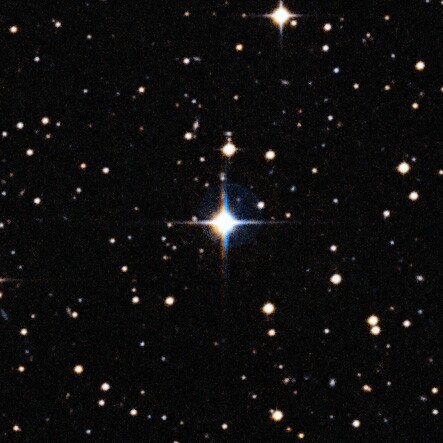Astronomers have used the ESO's Very Large Telescope (VLT) to observe the Sun-like star HIP 102152. The object, which resides 250 light-years away, is a solar twin exhibiting very similar attributes to our own Sun. HIP 102152 is nearly four billion years older than the Sun, a characteristic that has provided a valuable insight into the link between the age of a star and the amount of lithium it carries.
Since the discovery of the first solar twin back in 1997, there has been a question mark over how the lithium content of stars develops over time. The Sun contains around 1 percent of the lithium present in the material from which it forms, while previously-observed solar twins have been found to contain proportionately less than this amount. This naturally lead to an unconfirmed theory stating that the level of lithium present in the stars deteriorates over time.
With the exception of its 8.2 billion year age, HIP 102152 is more similar to the Sun than any other observed solar twin, and is even thought to possess the characteristics necessary to host terrestrial rocky planets. The unprecedented correlation with our own star means that the study effectively provides a look at the Sun four billion years farther into its life. It also provides a third point of the graph linking lithium content to age.

The team used the VLT's UVES spectograph to view the light from the star in its component parts, allowing them to determine the chemical composition of the distant object.
“We have found that HIP 102152 has very low levels of lithium. This demonstrates clearly for the first time that older twins do indeed have less lithium than our own Sun or younger solar twins” says Jorge Melendez, the teams leader and co-author of the paper. “We can now be certain that stars somehow destroy their lithum as they age, and that the Sun's lithium content appears to be normal for its age”.
In addition to the older star, another star, known as 18 Scorpii, was also observed as part of the study. The second solar twin is younger than our own star at 2.9 billion years and was found to contain proportionately more lithium than both HIP 102512 and the Sun.
Source: ESO






